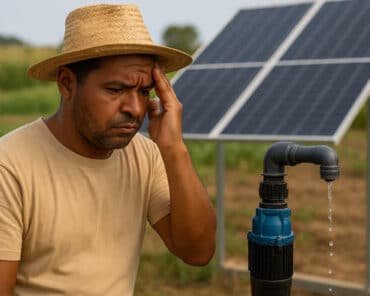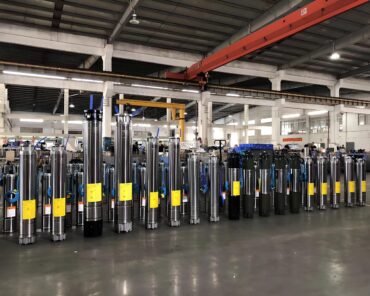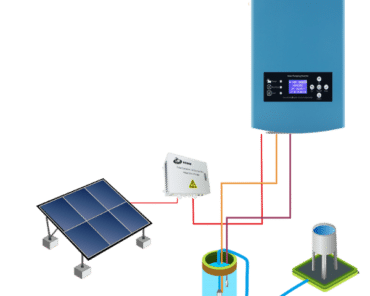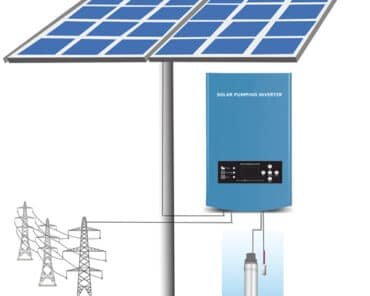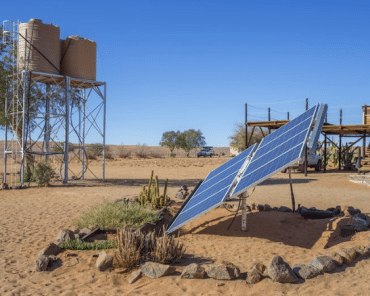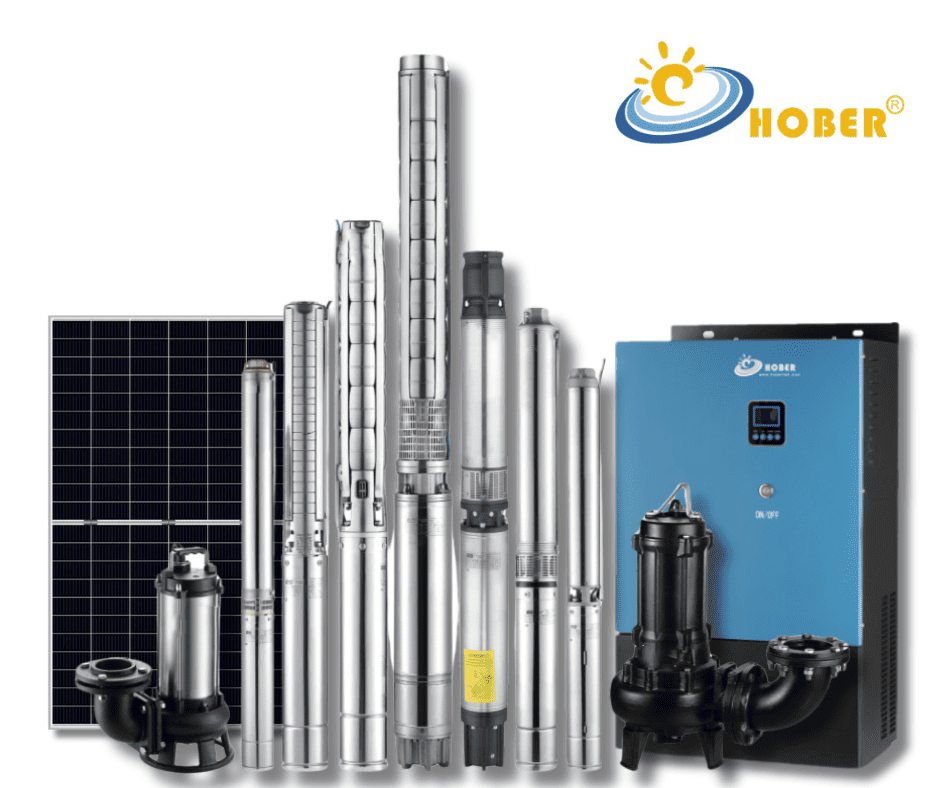No mundo da agricultura moderna, a eficiência energética é primordial. Uma bomba agrícola movida a energia solar oferece uma maneira inovadora de economizar energia, reduzir custos operacionais e aumentar a sustentabilidade. Ao aproveitar o poder do sol, essas bombas fornecem uma solução econômica e confiável para as necessidades de bombeamento de água em empresas agrícolas. Neste artigo, exploraremos como as bombas movidas a energia solar funcionam, seus principais componentes e como elas economizam energia.
Uma bomba solar economiza energia por meio da conversão eficiente de energia solar
Uma bomba solar agrícola economiza energia usando painéis solares para converter diretamente a luz solar em eletricidade, eliminando a necessidade de eletricidade da rede ou bombas movidas a diesel. Com a inclusão de tecnologias como MPPT (Maximum Power Point Tracking), o sistema otimiza o uso de energia ajustando-se às condições variáveis de luz solar, garantindo a máxima eficiência. Além disso, os sistemas de bombeamento solar apresentam inversores e MPPT de rastreamento para melhorar o desempenho, alternando automaticamente para o melhor modo operacional para economizar energia e reduzir custos.

Quais são as principais vantagens das bombas movidas a energia solar?
As bombas movidas a energia solar oferecem inúmeras vantagens para as empresas agrícolas. Primeiramente, esses sistemas são eficiente em termos energéticos uma vez que dependem inteiramente de energia solar, reduzindo a dependência de energia elétrica cara ou diesel. Ao usar Painéis solares, o sistema gera Energia CC, que é então convertido em Energia CA pelo solar inversor de bomba. Isso resulta em uma fonte de energia limpa e renovável que é econômica e ecológica.
Além disso, as bombas solares exigem manutenção mínima, pois há menos peças móveis em comparação com as bombas tradicionais. A integração de MPPT a tecnologia garante que o sistema esteja sempre funcionando em sua capacidade ideal, ajustando-se à intensidade do sol. Seja um monofásico ou CA trifásica sistema, as bombas solares podem ser dimensionadas para atender a necessidades específicas, o que as torna uma excelente escolha para operações pequenas e grandes.
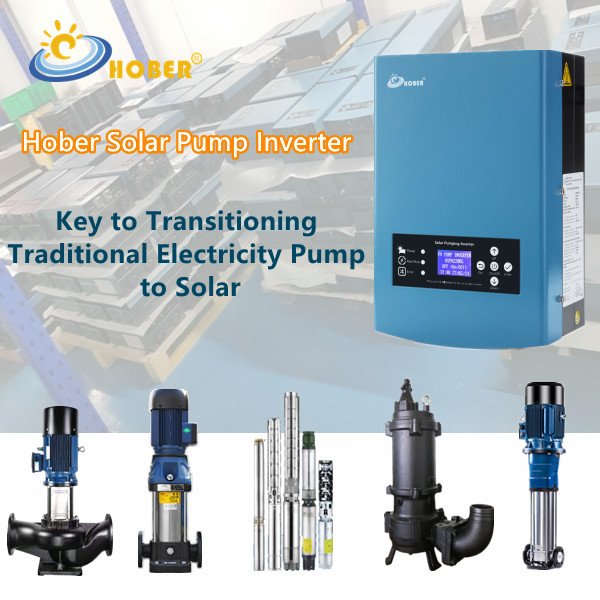
Como funciona um sistema de bomba solar?
UM sistema de bombeamento solar de água funciona convertendo energia solar em eletricidade utilizável. O processo começa quando Painéis solares capturar a luz solar e convertê-la em Energia CC. Esta corrente contínua é enviada para o inversor de bomba, que o transforma em Energia CA adequado para o motor da bomba. A bomba então extrai água de poços, rios ou outras fontes.
Inversores de bombeamento solar em série oferecem flexibilidade e escalabilidade para sistemas maiores. Eles permitem a configuração de vários painéis para atender às demandas de energia de operações agrícolas mais extensas. Além disso, as bombas movidas a energia solar apresentam um partida suave função que aumenta gradualmente a velocidade do motor, protegendo o sistema contra picos repentinos de energia e prolongando a vida útil da bomba.

Qual é o papel do MPPT em bombas solares?
O papel de MPPT (Rastreamento Máximo de Power Point) em bombas solares não pode ser exagerado. Esta tecnologia garante que o sistema sempre opere com a máxima saída de energia possível, independentemente das variações da luz solar. Os painéis solares produzem diferentes quantidades de energia dependendo da hora do dia e das condições climáticas. MPPT ajusta continuamente a voltagem e a corrente para manter o sistema funcionando de forma eficiente, garantindo que a bomba funcione perfeitamente mesmo com luz solar flutuante.
Em essência, rastreamento MPPT otimiza a coleta de energia, garantindo que a bomba solar opere com desempenho máximo durante todo o dia. Isso contribui para a economia geral de energia ao maximizar a quantidade de energia coletada do sol.
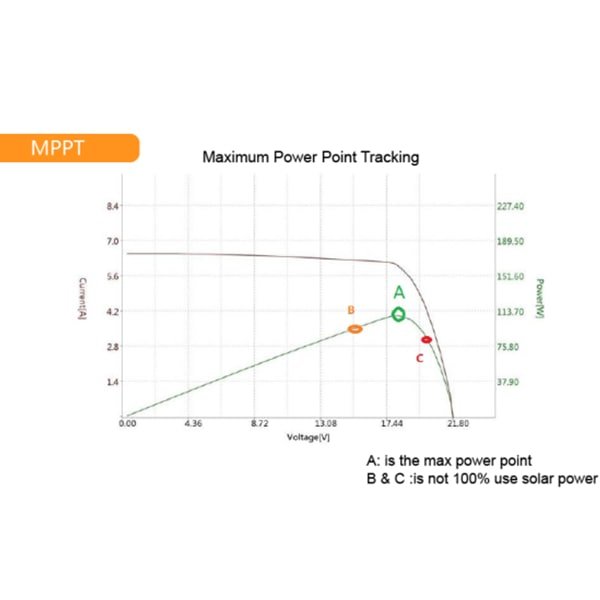
CA monofásica ou trifásica: qual é a melhor para bombas solares?
Ao escolher um sistema de bomba solar, uma decisão importante é se deve optar por CA monofásica ou CA trifásica poder. CA monofásica os sistemas são geralmente mais acessíveis e mais simples de instalar, tornando-os ideais para fazendas menores com necessidades moderadas de bombeamento de água. Por outro lado, CA trifásica os sistemas oferecem maior eficiência e são mais adequados para operações em larga escala, onde maiores demandas de energia são comuns.
Bombas movidas a energia solar podem facilmente acomodar ambas as opções, dependendo dos requisitos de energia do negócio agrícola. Usando CA trifásica para operações maiores garante que o sistema possa lidar com altas cargas de forma mais eficaz, reduzindo o desperdício de energia e otimizando o desempenho.
Como uma bomba solar economiza em custos de energia?
Ao utilizar energia solar, as empresas agrícolas podem reduzir drasticamente a sua dependência de rede elétrica ou bombas movidas a diesel. O custo inicial de instalação de um sistema de bomba movido a energia solar pode ser maior, mas a economia a longo prazo é significativa. Sem custos de combustível e manutenção mínima, as bombas solares oferecem uma solução confiável e econômica.
Rastreamento MPPT e Painéis solares trabalham juntos para garantir que a energia seja usada de forma eficiente ao longo do dia. À medida que o sistema se ajusta à mudança da luz solar, ele muda automaticamente para o modo mais eficiente, evitando o desperdício de energia. Este sistema reduz a necessidade de custos Energia CA e ajuda empresas agrícolas a economizar nas contas de eletricidade.
Como uma bomba solar lida com condições de funcionamento a seco?
Uma característica importante das bombas solares modernas é sua capacidade de detectar teste de simulação condições, que ocorrem quando não há água suficiente para bombear. Quando a bomba detecta que não há água disponível, ela desliga automaticamente para evitar danos ao motor. Esse recurso de comutação automática garante que o sistema não seja apenas energeticamente eficiente, mas também durável e duradouro.
Além disso, a capacidade de operar eficientemente durante condições secas reduz o consumo de energia. Ao evitar operações desnecessárias, a bomba solar garante que a energia seja usada somente quando for necessária, evitando desperdício e economizando energia.
Quais são as desvantagens das bombas solares de água?
Embora as bombas movidas a energia solar ofereçam muitos benefícios, elas têm algumas desvantagens. custo de instalação inicial pode ser alta, e o desempenho do sistema está diretamente ligado à disponibilidade de luz solar. Durante períodos nublados ou chuvosos, a eficiência da bomba pode diminuir, e ela não pode operar à noite.
Além disso, a instalação e a manutenção de bombas movidas a energia solar exigem um planejamento cuidadoso. Embora a economia de custos ao longo do tempo seja significativa, o investimento inicial e a manutenção de componentes como Painéis solares e inversores de bomba precisam ser considerados.
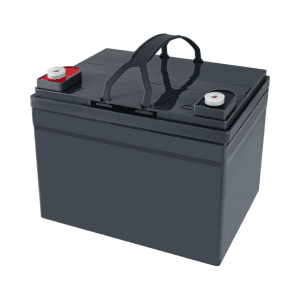
Resumo
As bombas solares para agricultura representam um excelente investimento para empresas agrícolas que buscam economizar em custos de energia, reduzir sua pegada ambiental e melhorar a eficiência. Com tecnologias-chave como MPPT, inversores de bomba, e Painéis solares, esses sistemas garantem desempenho ideal, menor consumo de energia e sustentabilidade a longo prazo. Ao investir em um sistema de bombeamento movido a energia solar, as empresas podem não apenas economizar nas contas de eletricidade, mas também contribuir para um futuro mais verde e com maior eficiência energética para a agricultura.

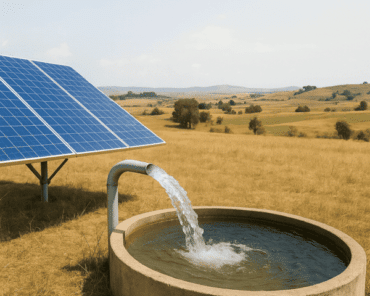
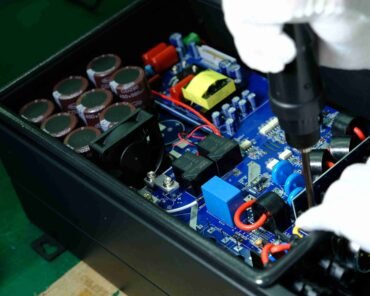
](https://hobertek.com/wp-content/uploads/2025/03/solar-pump-inverter-for-irrigation-efficient-water-pumping-solution-370x296.png)
